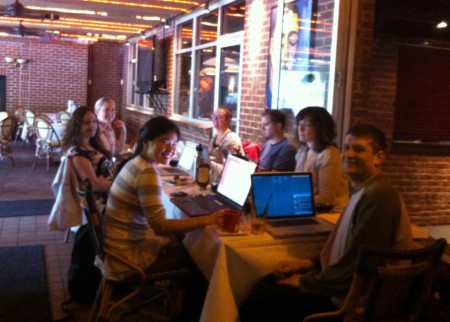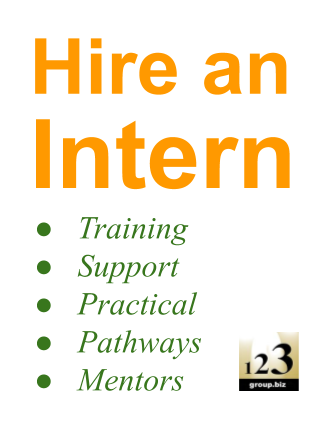Teleworking and Working at Home
 The job market is going through a fair bit of change at the moment. Companies are downsizing and restructuring, and full-time jobs are becoming scarce. But it’s not the doomsday horror some people would have you think it is. In fact, it’s presenting a great opportunity for professionals to contract their services out to businesses as virtual assistants or independent contractors.
The job market is going through a fair bit of change at the moment. Companies are downsizing and restructuring, and full-time jobs are becoming scarce. But it’s not the doomsday horror some people would have you think it is. In fact, it’s presenting a great opportunity for professionals to contract their services out to businesses as virtual assistants or independent contractors.
In the past few years, we’ve seen a huge upswing in the number of people taking our Small Business Management and MYOB Training Courses, so they can go on to start their own home-based businesses.
Distractions, Distractions
But not everyone is all that well suited to working from home. Where I look for any excuse not to do the laundry, load the dishwasher or vacuum the floor, there are others who find chores a pleasant distraction from emails, Excel spreadsheets, MYOB journal entries, and so forth.
This can be problematic, then, when you have emails and Excel spreadsheets and MYOB journal entries to do, but find yourself too distracted to do them. Enter the shared co-working space, which provides entrepreneurs and other contracting professionals with a space they can work from, free of all their homely distractions.
The Rise of the Co-working Space
Co-working spaces are not a new phenomenon, though. Shared co-working spaces, as we know them, can be traced back to mid-1990s Berlin, but it was in San Francisco that they really took off among young tech entrepreneurs looking for like-minded individuals to collaborate with during the start-up phase of their businesses.
In essence, a co-working space is about working alongside, and often collaborating with, people you wouldn’t normally. But that definition has become pretty elastic in recent years, as working from home becomes more common, even among those employed in a regular office job. (Companies like Google, Ernst and Young and Macquarie Bank even encourage their staff to use co-working spaces when they’re not working in the office.)
The Casual Office
Nowadays, most co-working spaces don’t just consist of a communal bench and a power outlet to set your laptop up at, but also offer printing, scanning and faxing facilities, along with designated meeting rooms, collaborative workspaces that are equipped with blackboards for brainstorming sessions, and ‘phone booths’ – a quiet space for making and taking phone calls.
Co-working spaces have become the low-cost alternative to renting office space for those home-based business owners who still want to work in an office environment, as opposed to a desk shoved in the corner of their bedroom. They’re also a great way to meet and network with new people, which can help give you a fresh perspective on how you’re running your business.
Maybe the best part, though, is being able to wake up in the morning and asking yourself: “Where shall I work today?”


















